Now in its sixteenth year, the latest iteration of Turkey’s Anatolian Eagle exercise recently wrapped up at Konya Air Base in the Central Anatolia Region of Turkey. Chris Wood reports.

Behind the main gate at Konya are some examples of aircraft that have operated from the base in the past © Chris Wood – Global Aviation Resource
Konya is one of three Tactical Training Centres in the Western world, along with Nellis Air Force Base, home of Red Flag, in the USA and Canadian Forces Base Cold Lake, home of Maple Flag, in Canada. Anatolian Eagle is one of several exercises run from Konya throughout the year.
The roots of Anatolian Eagle go back to the 1980s when the Turkish Air Force started a modernisation programme, and recognised that training its personnel was as important as having the right equipment. However it wasn’t until June 2000 that preparations started in earnest. This followed the Turkish Air Force’s first participation in Red Flag in August 1997 with six F-16s, a pair of bilateral Anatolian Flag exercises with the United States Air Force at Incirlik in 1998 and a return trip to Red Flag in early 2000. The 3rd Main Jet Base at Konya, which is located on the edge of the vast and sparsely populated Konya Plain in Central Anatolia, was chosen as it is in an ideal location for this type of exercise. The infrastructure was completed on 12 June 2001, only a few days before the start of the first Anatolian Eagle exercise. Participants for this came from the Turkish, United States and Israeli Air Forces.

This Anatolian Eagle symbol can be found outside the main building © Chris Wood – Global Aviation Resource
Improvements were made in 2003 with the deployment of Electronic Warfare (EW) systems, and in 2008 when a dedicated aircraft parking area, the Eagle ramp, was opened.

A Royal Saudi Air Force Tornado at rest on the Eagle ramp © Chris Wood – Global Aviation Resource
The exercise usually occurs several times a year, and the latest was its 38th iteration. 14 visiting nations from the USA, Europe and the Middle East, as well as NATO, have taken part, with overseas participation occurring predominantly in the June exercise.
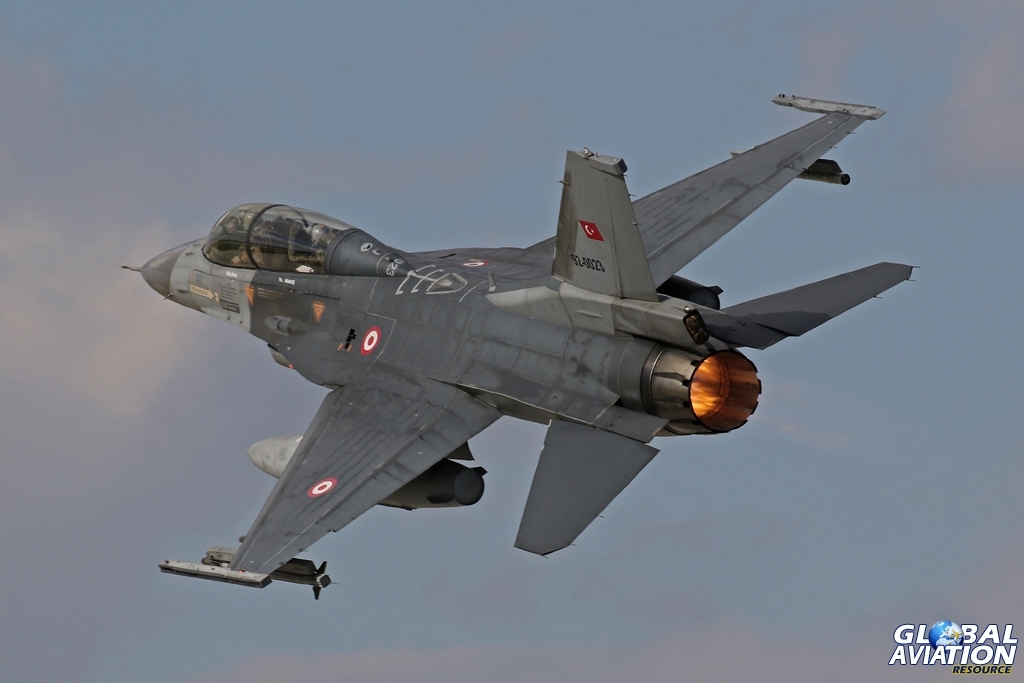
Although it’s a multi national exercise, the majority of participants are Turkish Air Force F-16s © Chris Wood – Global Aviation Resource
Anatolian Eagle has many similarities with Red Flag. According to Colonel Mustafa Erturk, Operations Commander, one of its objectives is to provide a realistic operational environment to give inexperienced pilots exposure to being part of a large force in wartime conditions, with the aim of increasing their survivability, especially in the early days of a war. It also provides an opportunity for an exchange of experiences amongst participating aircrew and the facility to improve interoperability between different air forces operating different types of aircraft.

Col Erturk briefs the media © Chris Wood – Global Aviation Resource
The action takes place in airspace spread over 50,000 square miles, and up to 50,000ft, centred roughly 70 miles East of Konya. There is also an area over the Mediterranean, North of Cyprus, for maritime operations. This allows room for 70 to 80 fast jet aircraft to operate safely.
Just like Red Flag, the visiting units form the Blue Force, and are augmented by the addition of Airborne Early Warning and Control (AEW&C) aircraft, either from the based Boeing E-7T Peace Eagles (callsign ‘Wiseman’) of 131 Filo or NATO Boeing E-3A Sentries (callsign ‘Magic’) from NATO’s AEW&C Force. Combat Search and Rescue (CSAR) is provided by the based 135 Filo (callsign ‘Blaze’), using their Airbus AS532AL Cougars and Bell UH-1H Iroquois.
The opposing units form the Red Force, which is made up of the Konya-based 132 Weapons and Tactics Squadron (Filo), callsign ‘Dagger’, with their Lockheed Martin F-16 Fighting Falcons. They operate in the Aggressor role. Controlling their operations are Ground Controllers, callsign ‘Redeye’, whilst further threats are provided by a range of ground-based air defence systems, call sign ‘Hammer’. These are predominantly mobile radar and anti-aircraft missile and gun systems. The Red Force is seen as the training aid for the Blue Force.

Eight F-16s from 132 Filo taxy back to their shelters after the last mission of the exercise © Chris Wood – Global Aviation Resource
Controlling the exercise is the White Force. They develop the scenarios, release the Air Tasking Orders (ATOs), monitor the missions and analyse the results. Under the auspices of the Air Boss, an experienced fast jet pilot, they provide Command and Control (C2) of the exercise using the Air Combat Manoeuvring Instrumentation (ACMI) system. This allows the White Force to track in real time every aircraft taking part, and to be able to monitor such parameters as their altitude and airspeed. It is the Air Bosses most valuable tool.
Fundamentally the Blue Force is given targets to attack in the Red lands using Combined Air Operations (COMAO), which are defended by the Red Force with aircraft and ground-based systems.
The Anatolian Eagle facilities are located in one area on the Western side of the base. Each Force has its own buildings within the complex; Blue Force has three buildings whilst Red and White have one each. Only members of the respective Force are allowed in their buildings. They are all situated close to the main briefing room, and nearby are accommodation blocks and other social facilities.
According to Col Erturk, who commanded the recent Turkish Air Force deployment to Red Flag 16-2, recent and current operations, particularly Operation Unifed Protector, are studied and lessons learned are applied to the exercise. Dynamic Targeting (DT) – prosecution of targets that were not included in the deliberate targeting process – and Time Sensitive Targeting (TST) – targets requiring immediate response because they pose (or will soon pose) danger to friendly forces or are highly lucrative, fleeting targets of opportunity – were the focus of the 2016 exercise. Additionally, CSAR was included in each mission.
Anatolian Eagle 16-2 ran from 30 May until 10 June. Units participating in this exercise were predominantly from the Turkish Air Force, with most fast jet squadrons being represented. There was also participation from the Italian Air Force with Tornados, Royal Netherlands Air Force with a KDC-10 and NATO with an E-3A, plus from further East the Pakistan Air Force with F-16s and the Royal Saudi Air Force, also with Tornados. A total of 45 Turkish aircraft and 22 aircraft from allied nations were allocated to the exercise along with 673 Turkish and 532 international personnel. However, most of the Turkish fast jet squadrons appeared to have brought extra aircraft.

The Pakistan Air Force brought a mix of F-16As and Bs © Chris Wood – Global Aviation Resource
Although it was spread over a three-week period, the first week involved arrival procedures, briefings and local familiarisation flights, with the first full mission not being flown until the Monday of week two. Two missions were planned for most weekdays, all daytime missions, with the last one being on the Thursday morning of week three. One group of aircrew would fly the morning mission whilst a second group would fly the afternoon one, whilst others would be planning the next day’s missions.
There was a leading scenario for the exercise, but the missions are planned with some flexibility to modify the scenario from mission to mission, depending on the outcome of previous missions. This allows the participants to maximise the training benefit.
After the final mission there was a mass debriefing, following which most of the Turkish aircraft and the Italian Tornados departed for their home bases. The remaining aircraft consisiting of the Pakistani F-16s, the Saudi Tornados, the NATO E-3s and the Dutch KDC-10 left for home on the morning of Friday 10 June. This just left a number of transport aircraft to pick up the support equipment, most unusual of which was an Ilyushin IL-76MF of Jordanian International Air Cargo, operating on behalf of the Royal Saudi Air Force.
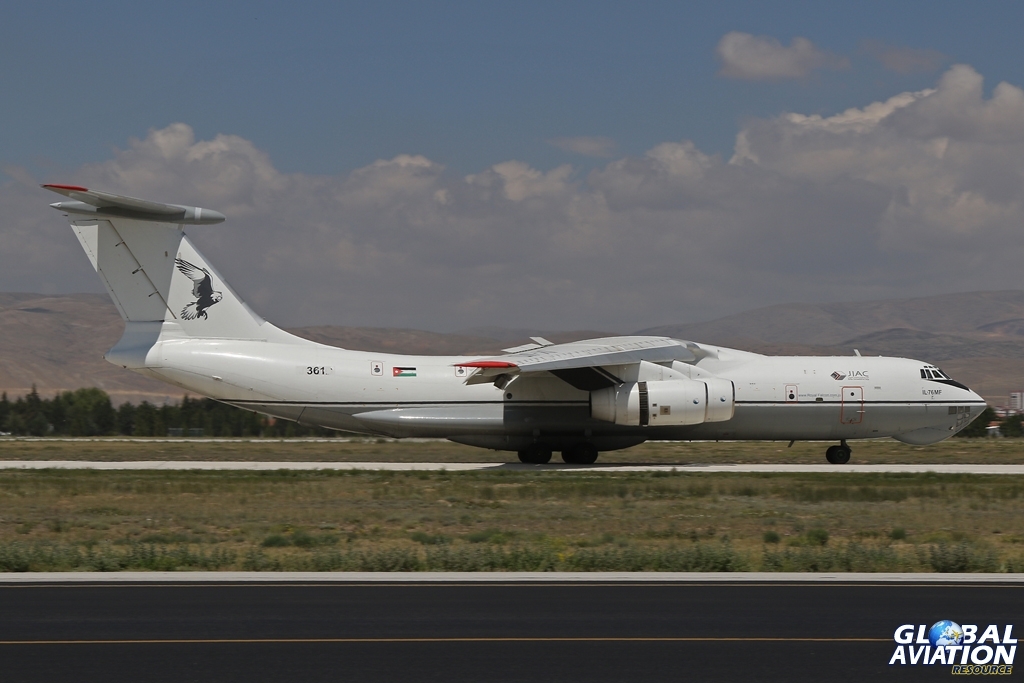
The Jordanian IL-76 arriving at Konya after the exercise had finished © Chris Wood – Global Aviation Resource
Making up the Blue Force were the following units. The F-16s were employed as multi role assets.
From the 1st Main Jet base at Eskisehir, 111 Filo ‘Panter’ brought eight F-4E-2020 Phantoms for the air-to-ground role. Two of the aircraft carried the Vietnam era Pave Spike laser designator targeting pod and they all carried the ELTA EL-8222 Electronic Countermeasures pod.
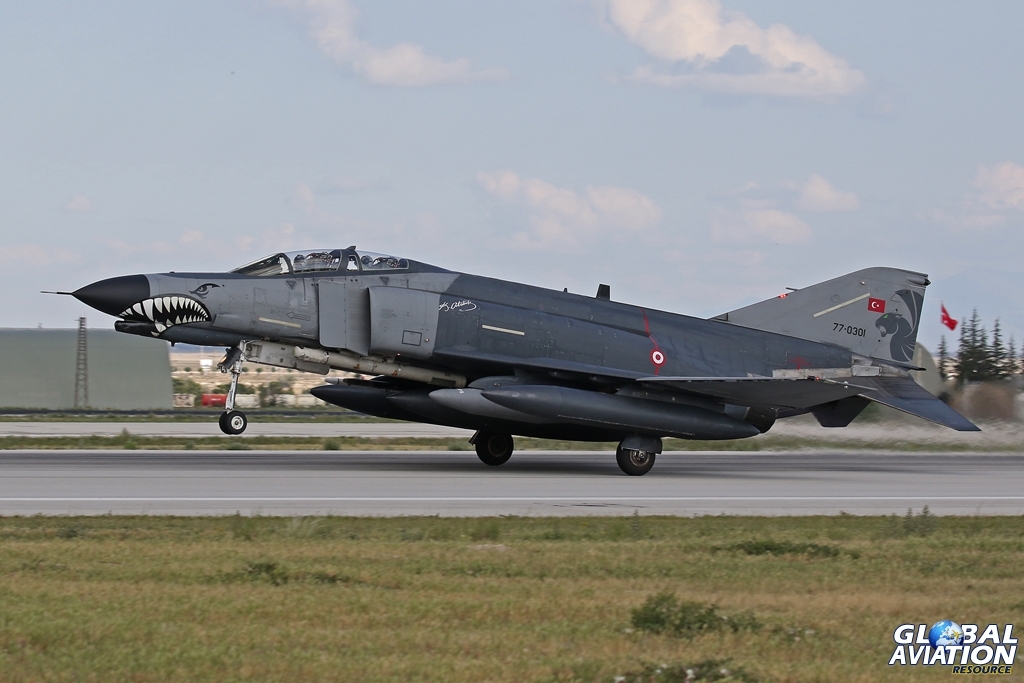
This aircraft has the Pave Strike pod (the long white ‘tube’ under the forward fuselage) © Chris Wood – Global Aviation Resource
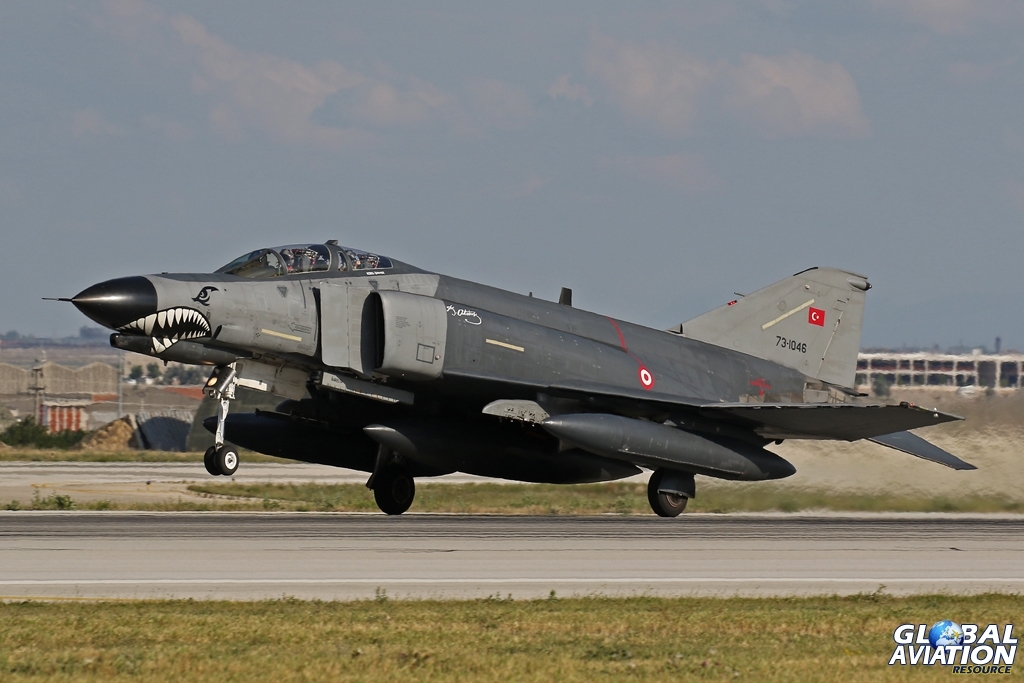
Visible in this shot is the EL-8222 ECM pod, under the fuselage by the engine intake © Chris Wood – Global Aviation Resource

This F-4E is carrying an inert Maverick missile, and is one of two wearing a badge to commemorate the disbandment of 112 Filo ‘Devils’ in June 2015 © Chris Wood – Global Aviation Resource
From the 5th Main Jet Base at Merzifon, 151 Filo ‘Bronze’ brought seven F-16C Fighting Falcons plus one F-16D.
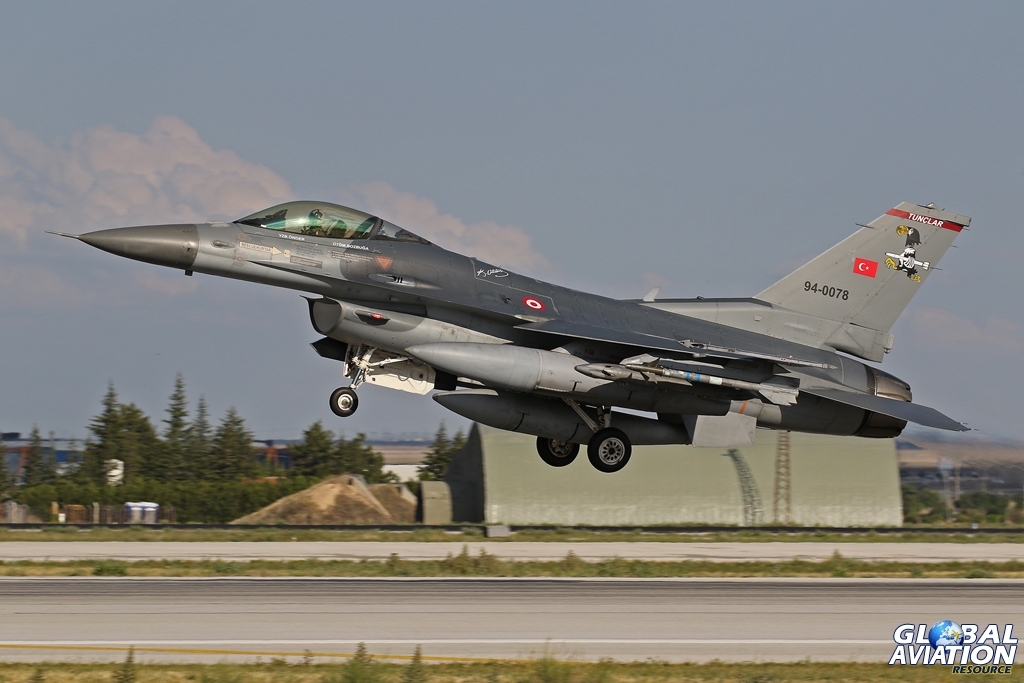
A 151 Filo F-16C heads home after the exercise finished. It’s carrying a pair of SUU-20 rocket launcher and practice bomb dispensers © Chris Wood – Global Aviation Resource
152 Filo ‘Raiders’ brought one F-16C and a pair of F-16Ds.

A 152 Filo F-16D gets airborne © Chris Wood – Global Aviation Resource
From the 6th Main Jet base at Bandirma, 161 Filo ‘Bats’ brought three Block 50 F-16Cs and three Block 50 F-16Ds, all fitted with Conformal Fuel Tanks (CFTs).

A 161 Filo F-16D heads for the runway for another mission © Chris Wood – Global Aviation Resource

161 Filo carry one badge on one side of the fin, and a different one on the other side © Chris Wood – Global Aviation Resource
162 Filo ‘Harpoons’ brought four F-16Cs and an F-16D.
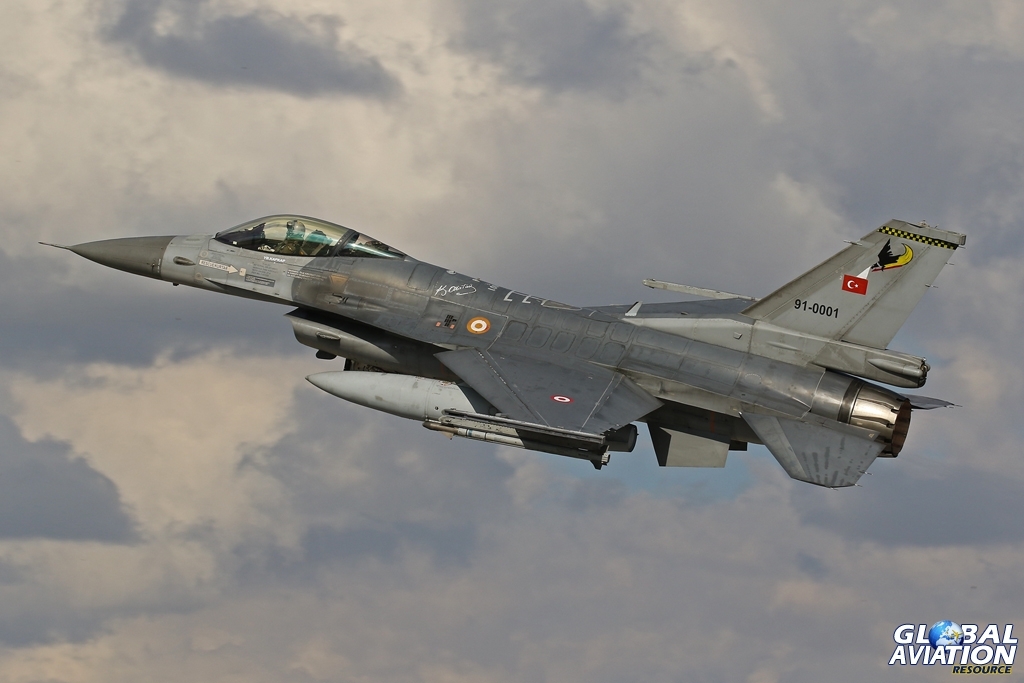
162 Filo F-16C heading home © Chris Wood – Global Aviation Resource
From the 8th Main Jet Base at Diyarbakir, 181 Filo ‘Hawks’ brought three F-16Cs and a pair of F-16Ds.

A 182 Filo F-16C recovers to Konya at the end of a mission © Chris Wood – Global Aviation Resource
From the 9th Main Jet Base at Balikesir, 191 Filo ‘Cobras’ brought six F-16Cs and a pair of F-16Ds.
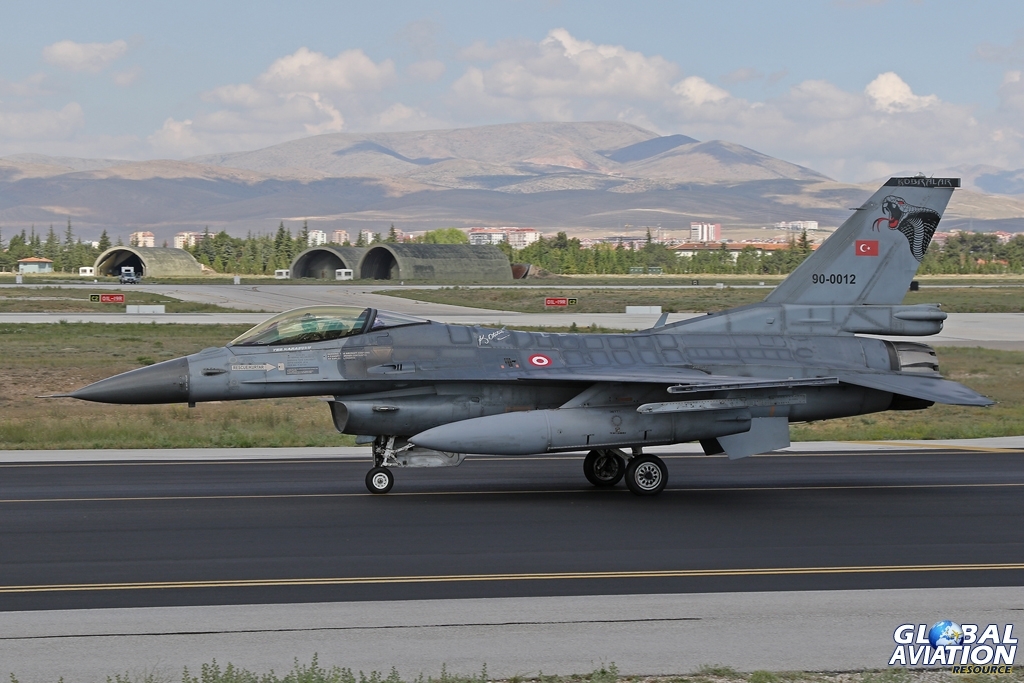
A 191 Filo F-16C heads for the runway for another mission © Chris Wood – Global Aviation Resource
192 Filo ‘Tigers’ were represented by a single F-16D.

The 192 Filo F-16D returns to Konya © Chris Wood – Global Aviation Resource
The Italian Air Force sent six Tornados; first off, three Tornado IDS from 6 Stormo at Ghedi.

6 Stormo Tornado IDS recovers to Konya © Chris Wood – Global Aviation Resource

50 Stormo Tornado ECR, with an inert High Speed Anti Radiation Missile (HARM) rotates at the start of another mission © Chris Wood – Global Aviation Resource
Additionally three Tornado ECR from 50 Stormo at Piacenza participated, and they were employed in the Suppression of Enemy Air Defences (SEAD) role.
11 Squadron ‘Arrows’ of the Pakistan Air Force from Mushaf brought four F-16As and a pair of F-16Bs.

An 11 Squadron F-16A heads for the runway © Chris Wood – Global Aviation Resource
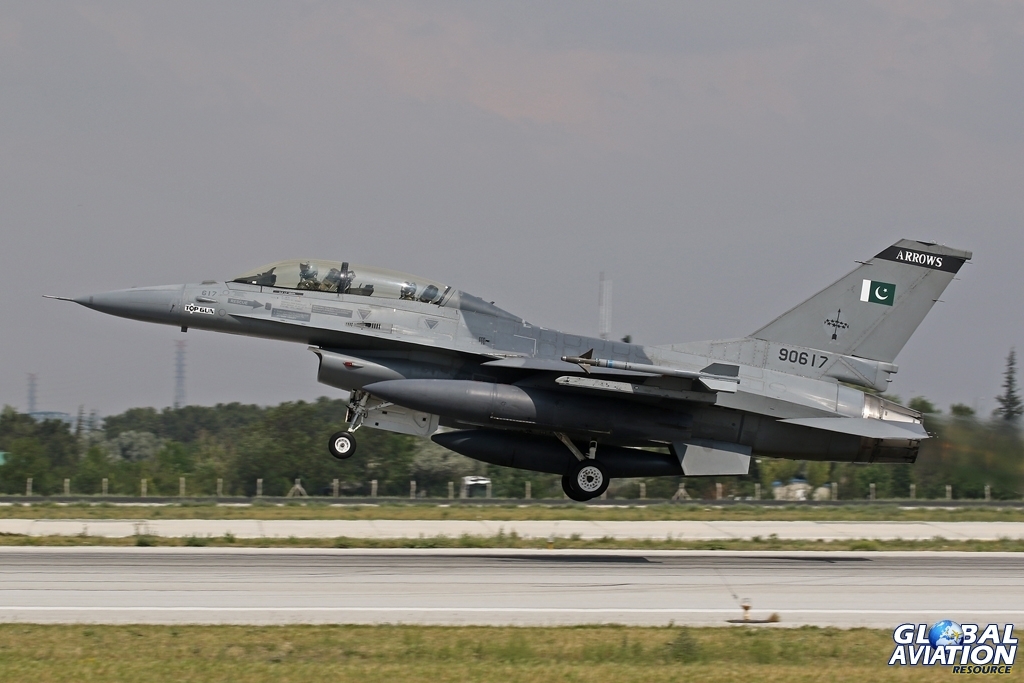
An 11 Squadron F-16B gets airborne for another mission © Chris Wood – Global Aviation Resource
The Royal Saudi Air Force sent eight Tornado IDS from a variety of squadrons, predominantly from 7 and 75 Squadrons, all based at Dhahran with 11 Wing.

A Saudi Tornado heads for the runway at the start of its journey home © Chris Wood – Global Aviation Resource

Starting its take-off roll, another Saudi Tornado heads home © Chris Wood – Global Aviation Resource
Additionally, in the AEW&C role the Konya based 131 Filo ‘Dragons’ contributed a single E-7T.
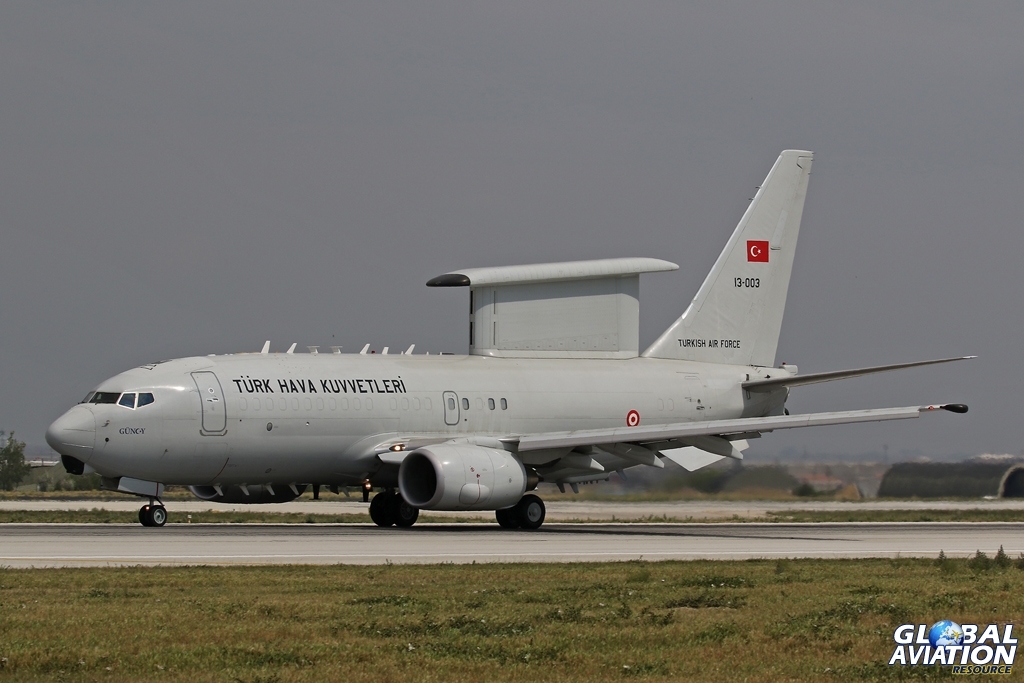
A 131 Filo E-7T on the runway at Konya © Chris Wood – Global Aviation Resource
The NATO AEW&C Force at Geilenkirchen, Germany, provided a pair of E-3A Sentries.
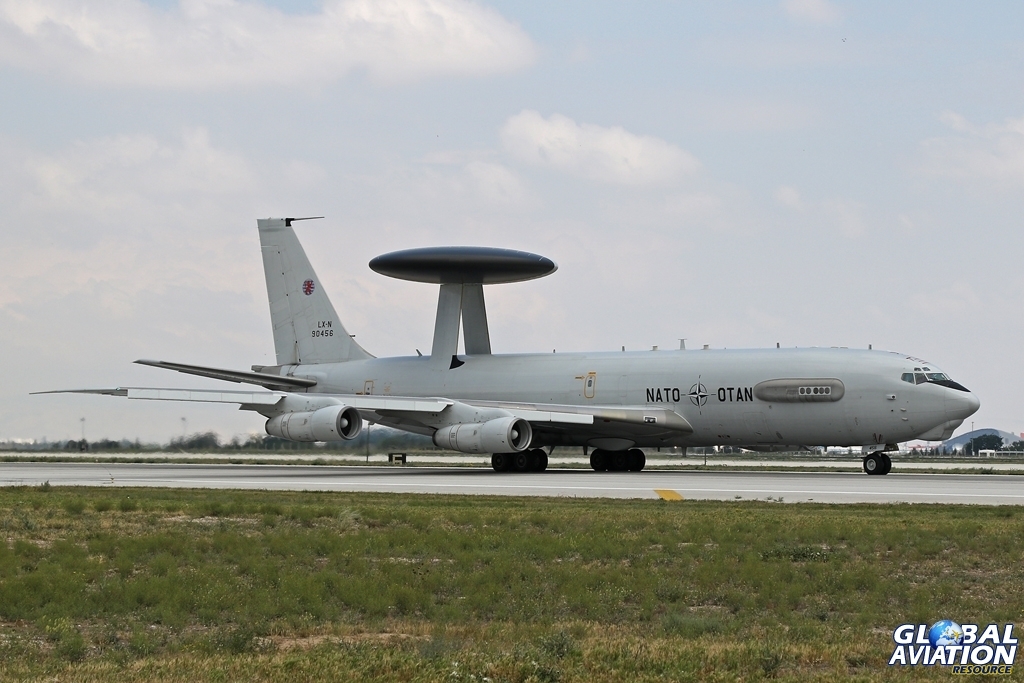
Still going strong, a NATO AEW&C Force E-3A © Chris Wood – Global Aviation Resource
CSAR was provided by Konya based 135 Filo ‘Fire’ with a pair of AS532AL Cougars.
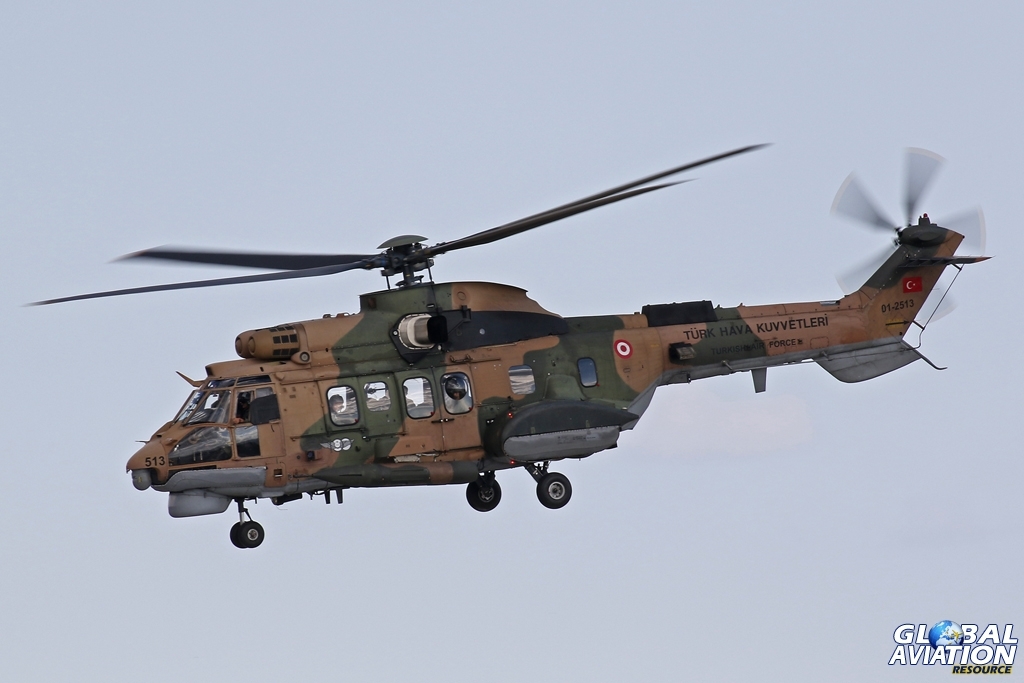
132 Filo Cougar © Chris Wood – Global Aviation Resource
They also contributed a single UH-1H Iroquois,
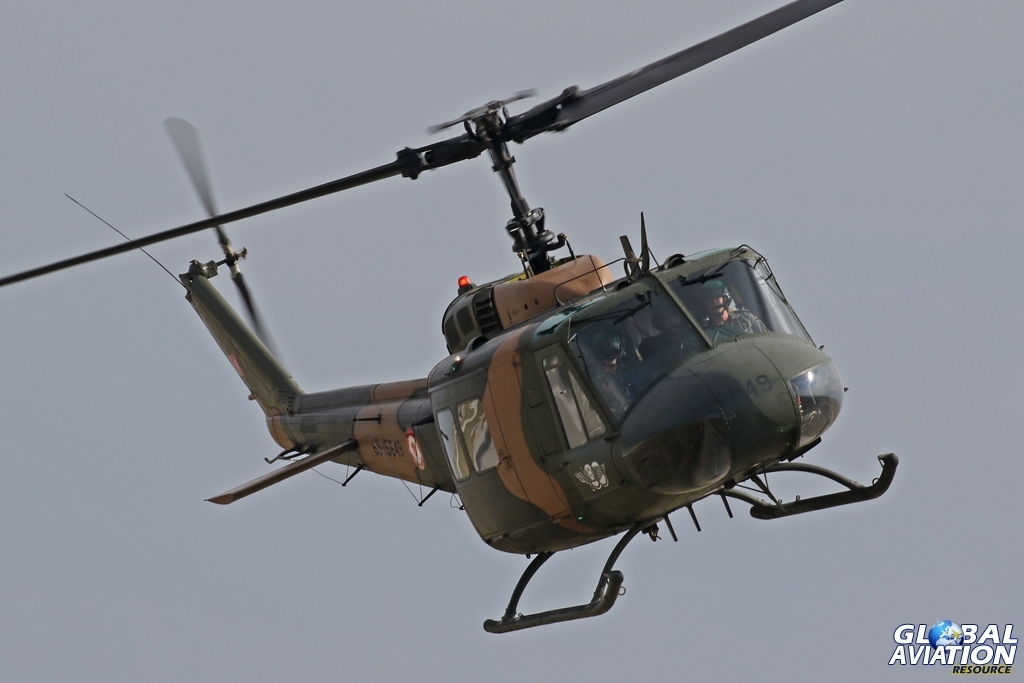
A welcome sight if you’ve been shot down, a UH-1H coming to pick you up! © Chris Wood – Global Aviation Resource
They were supported by Eskisehir-based 201 Filo ‘Audacious’ with a single CASA CN235,

221 Filo CN235 getting airborne © Chris Wood – Global Aviation Resource
Also joining them was 222 Filo ‘Flame’ from Erkilet with a single C-130E Hercules.

222 Filo C-130E heads for the runway © Chris Wood – Global Aviation Resource
Air-to-Air Refuelling (AAR) was provided by a Boeing KC-135R Stratotanker from the Incirlik based 101 Filo.
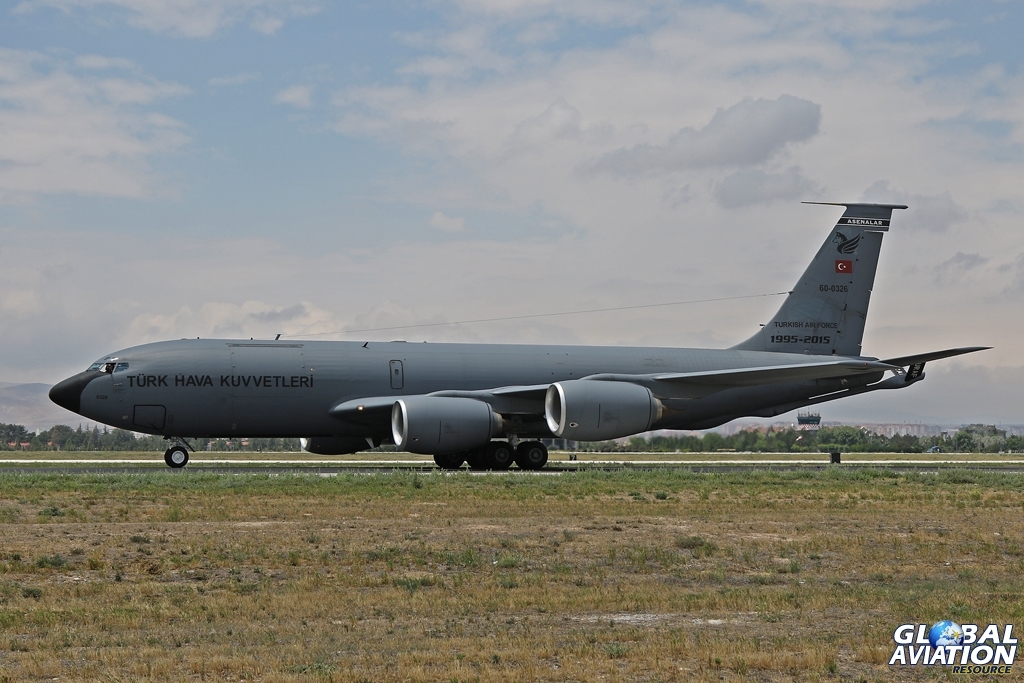
A 101 Filo KC-135R heads for its parking spot © Chris Wood – Global Aviation Resource
The Royal Netherlands Air Force also provided a KDC-10 from 334 Squadron at Eindhoven in the AAR role.
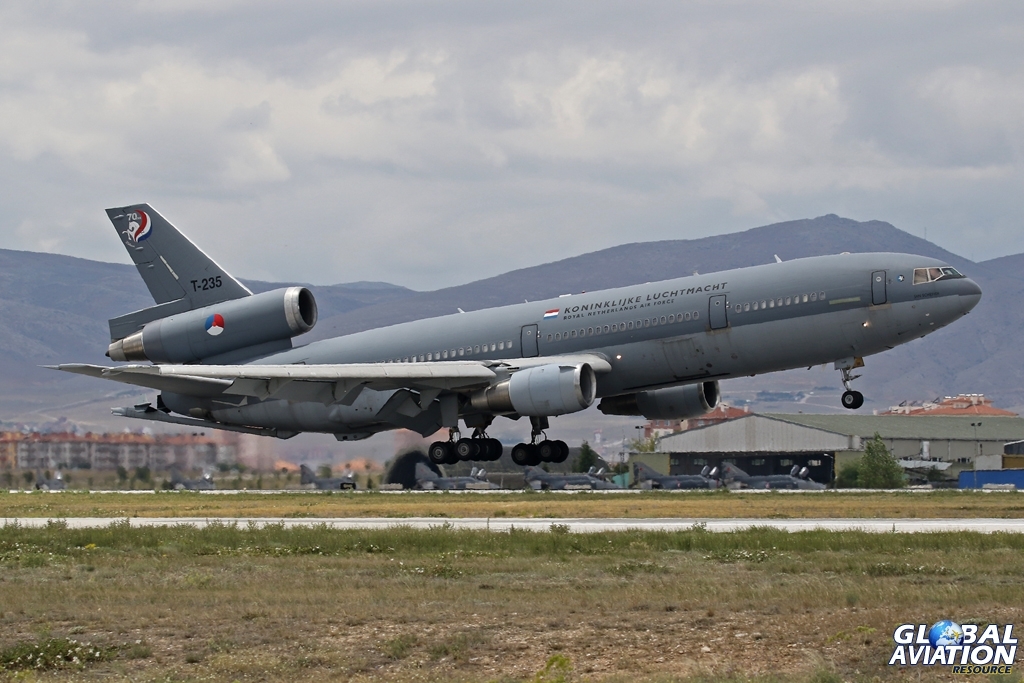
334 Squadron KDC-10 © Chris Wood – Global Aviation Resource
The Red Force consisted of F-16Cs and Ds from the Konya-based 132 Filo ‘Daggers’, with six of their aircraft being listed for the exercise.
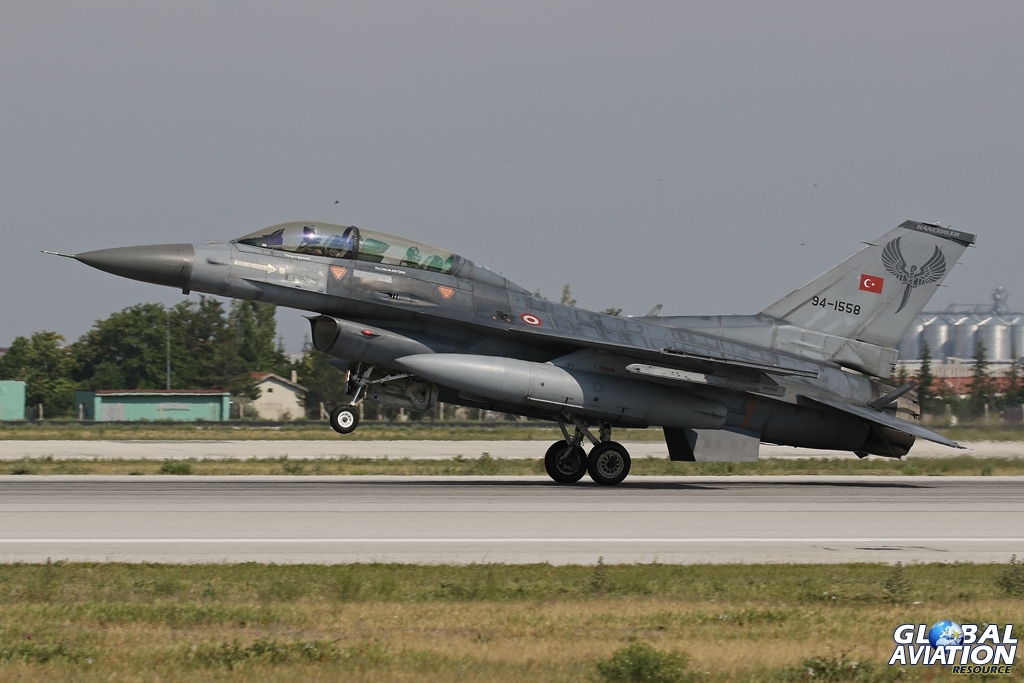
A 132 Filo F-16D recovers to Konya at the end of another mission © Chris Wood – Global Aviation Resource
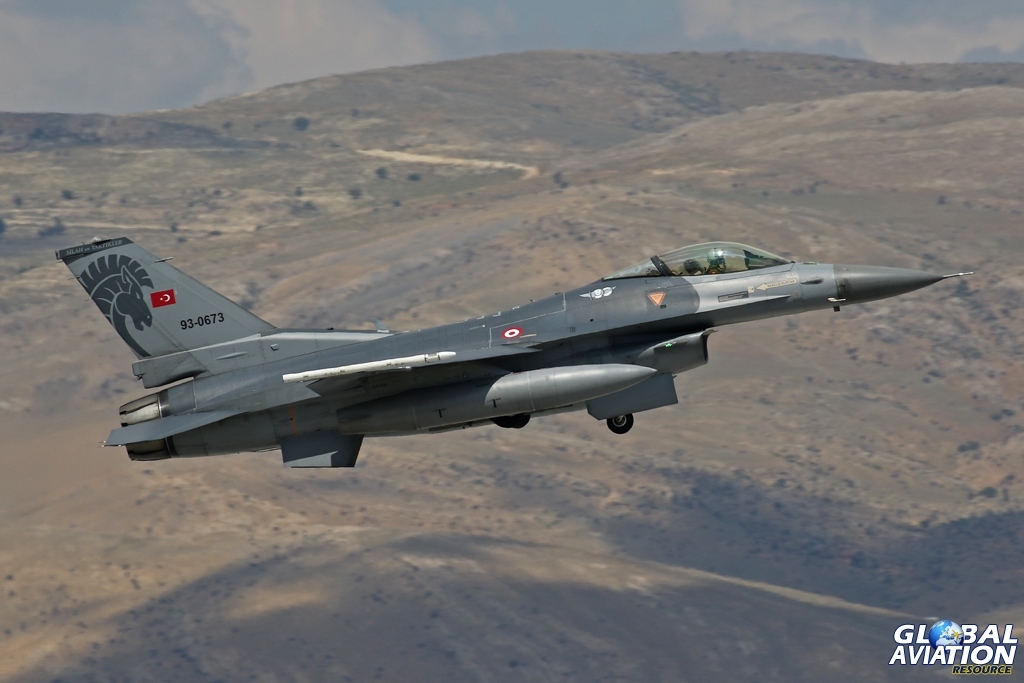
132 Filo is another squadron that carries different markings © Chris Wood – Global Aviation Resource
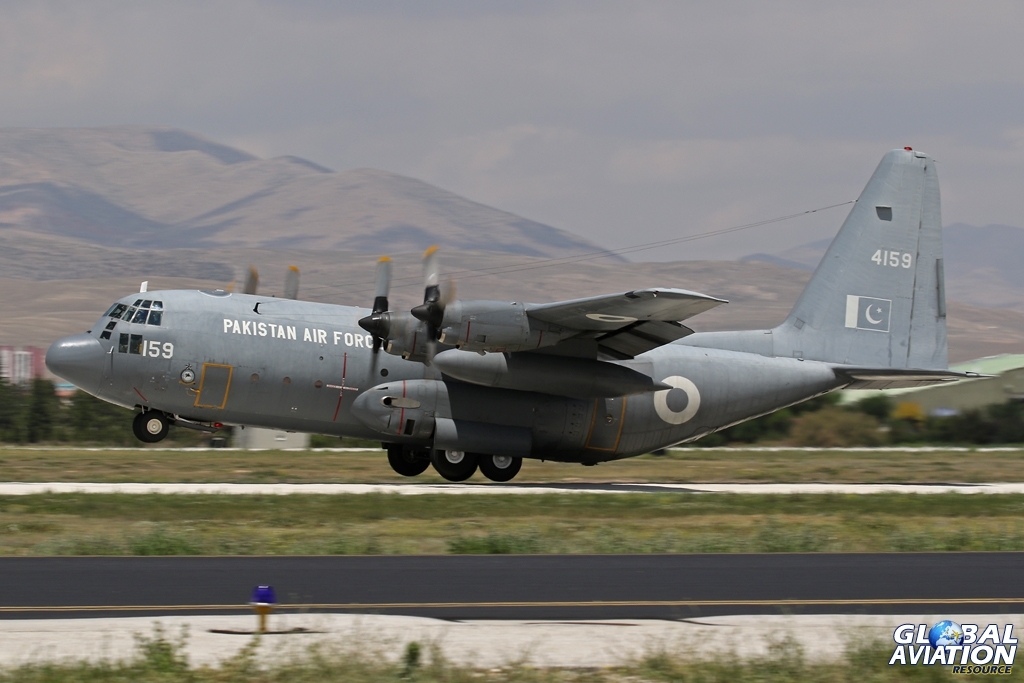
A Pakistan Air Force C-130E rotates off runway 19L on it’s way home © Chris Wood – Global Aviation Resource
Anatolian Eagle is an important exercise that ranks with Red Flag as one of the premier training exercises for NATO and its allies. Given its location on the boundary between Europe and the Middle East it and the ongoing unrest in the region its importance cannot be underestimated.
The author would like to thank the Turkish Air Force Public Affairs team for their help and support.

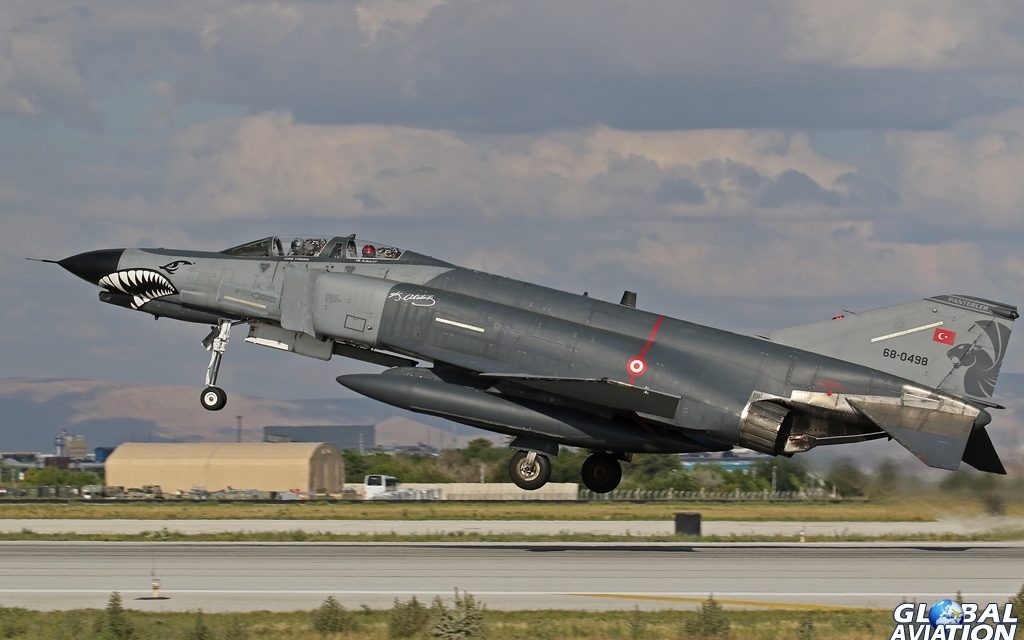


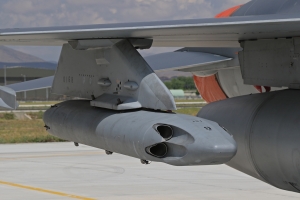





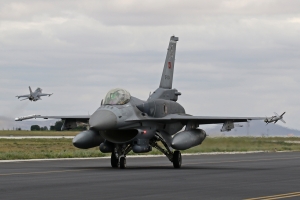

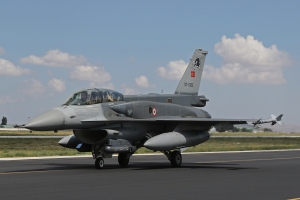
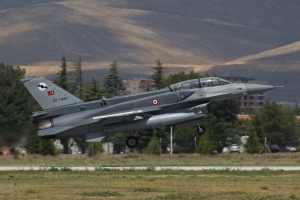

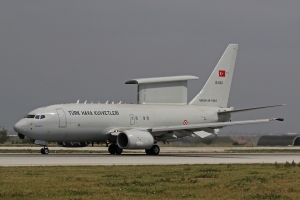
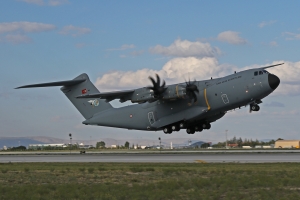



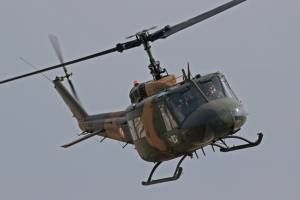
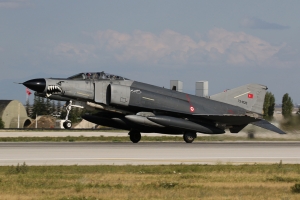
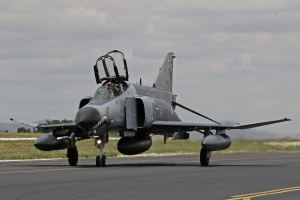
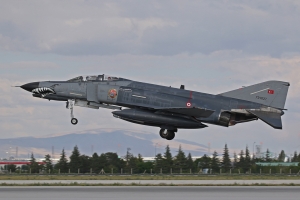

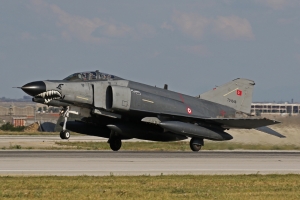

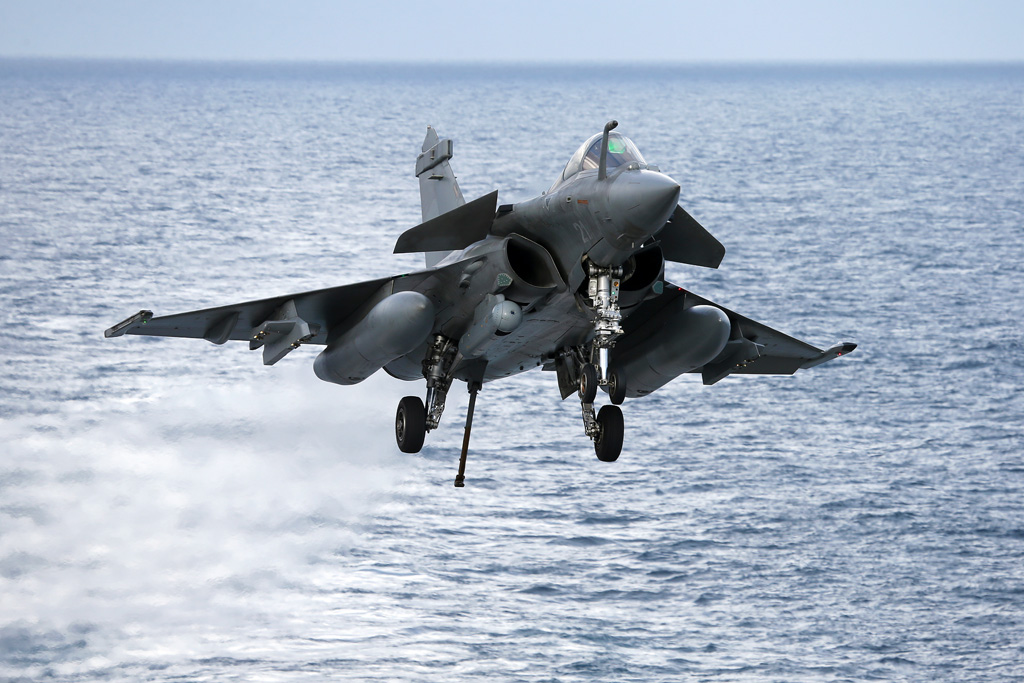


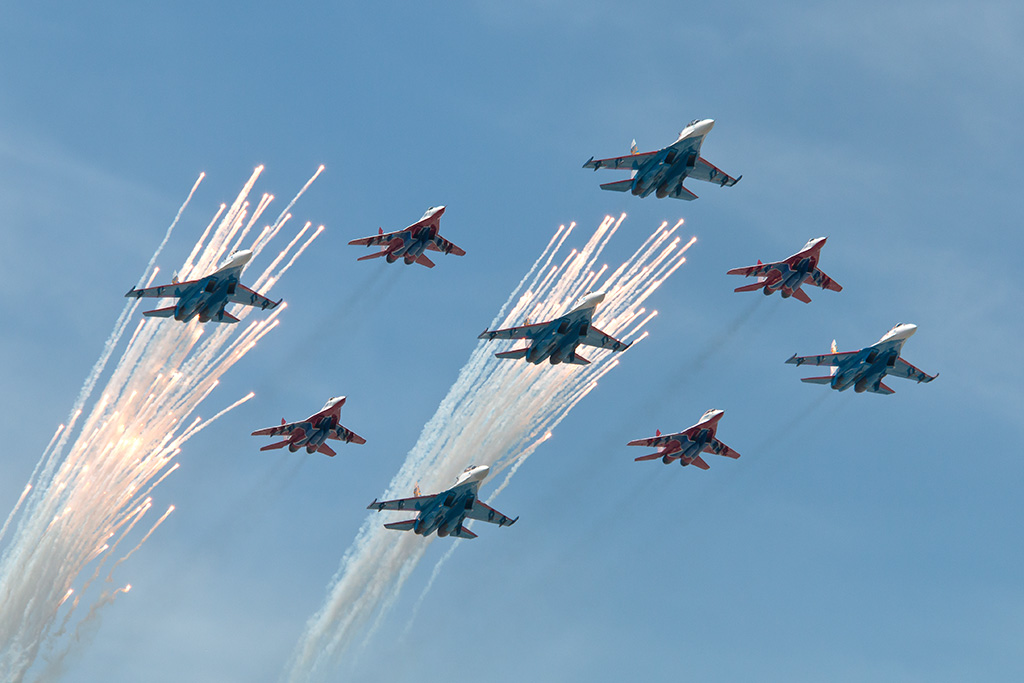
Nice report chris on ANATOLIAN EAGLE 2016, I think many of your shots that you must have been stood very close to were I was standing.